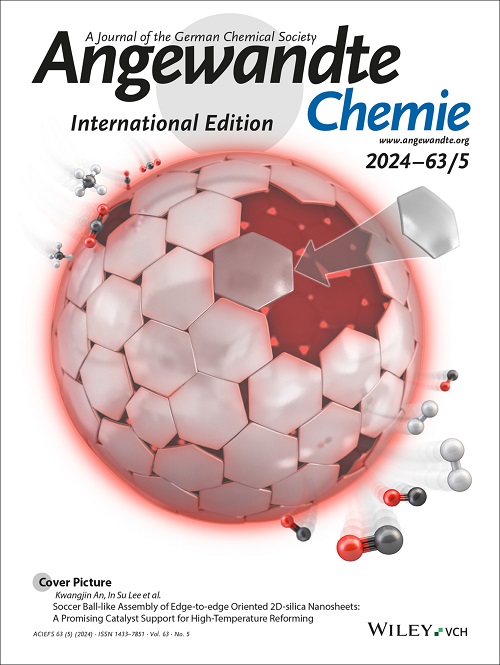通过双配位设计在mof中创造丰富的开放金属位点以提高电催化活性
IF 16.9
1区 化学
Q1 CHEMISTRY, MULTIDISCIPLINARY
引用次数: 0
摘要
具有明确晶体结构的金属有机框架(mof)为揭示结构-性质关系提供了理想的平台,但其低密度的可达金属位点限制了催化活化。努力产生开放的金属场地往往损害结构完整性,阻碍机械调查。在这项研究中,我们将单配位mof转化为双配位框架,从而可以控制不饱和金属位点的产生,以提高电催化性能,同时保留晶体框架用于结构-性质研究。作为概念验证,我们将Zn─N单配位ZIF─L转化为Zn─N/O双配位mof (B‐mof),其中强Zn─N键充当结构支柱,弱Zn─O键充当可移动连接剂。在500°C退火后,Zn─O键的选择性解理产生缺陷mof (dB‐mof),具有丰富的开放Zn位点和良好的晶体结构。在碳布(CC)上生长的dB - MOF在肼氧化反应(HzOR)中表现出优异的性能,明显优于原始的B - MOF/CC。材料表征和理论计算相结合表明,去除Zn─O键会产生丰富的缺电子Zn位,从而增强了对HzOR中间体的吸附,降低了反应能垒。本文章由计算机程序翻译,如有差异,请以英文原文为准。
Creating Abundant Open Metal Sites in MOFs by Dual‐Coordination Design for Enhanced Electrocatalytic Activity
Metal–organic frameworks (MOFs) with well‐defined crystalline structures offer ideal platforms to unravel structure–property relationships, but their low density of accessible metal sites limits catalytic activation. Efforts to generate open metal sites often compromise structural integrity, obstructing mechanistic investigation. In this study, we convert single‐coordinated MOFs into dual‐coordinated frameworks, enabling controlled creation of unsaturated metal sites to boost electrocatalytic performance while preserving crystal framework for structure–property study. As a proof‐of‐concept, we transform Zn─N single‐coordinated ZIF‐L into Zn─N/O dual‐coordinated MOFs (B‐MOFs), where strong Zn─N bonds act as structural pillars and weaker Zn─O bonds serve as removable linkers. Upon annealing at 500 °C, selective cleavage of Zn─O bonds produces defective MOFs (d B‐MOFs) with abundant open Zn sites and a well‐retained crystal structure. The d B‐MOF grown on carbon cloth (CC) exhibits high performance in hydrazine oxidation reaction (HzOR), significantly superior to pristine B‐MOF/CC. A combination of material characterizations and theoretical calculation demonstrates that the removal of Zn─O bond creates abundant electron‐deficient Zn sites, which enhance the adsorption of HzOR intermediates and lower the reaction energy barriers.
求助全文
通过发布文献求助,成功后即可免费获取论文全文。
去求助
来源期刊
CiteScore
26.60
自引率
6.60%
发文量
3549
审稿时长
1.5 months
期刊介绍:
Angewandte Chemie, a journal of the German Chemical Society (GDCh), maintains a leading position among scholarly journals in general chemistry with an impressive Impact Factor of 16.6 (2022 Journal Citation Reports, Clarivate, 2023). Published weekly in a reader-friendly format, it features new articles almost every day. Established in 1887, Angewandte Chemie is a prominent chemistry journal, offering a dynamic blend of Review-type articles, Highlights, Communications, and Research Articles on a weekly basis, making it unique in the field.

 求助内容:
求助内容: 应助结果提醒方式:
应助结果提醒方式:


